NGC5033
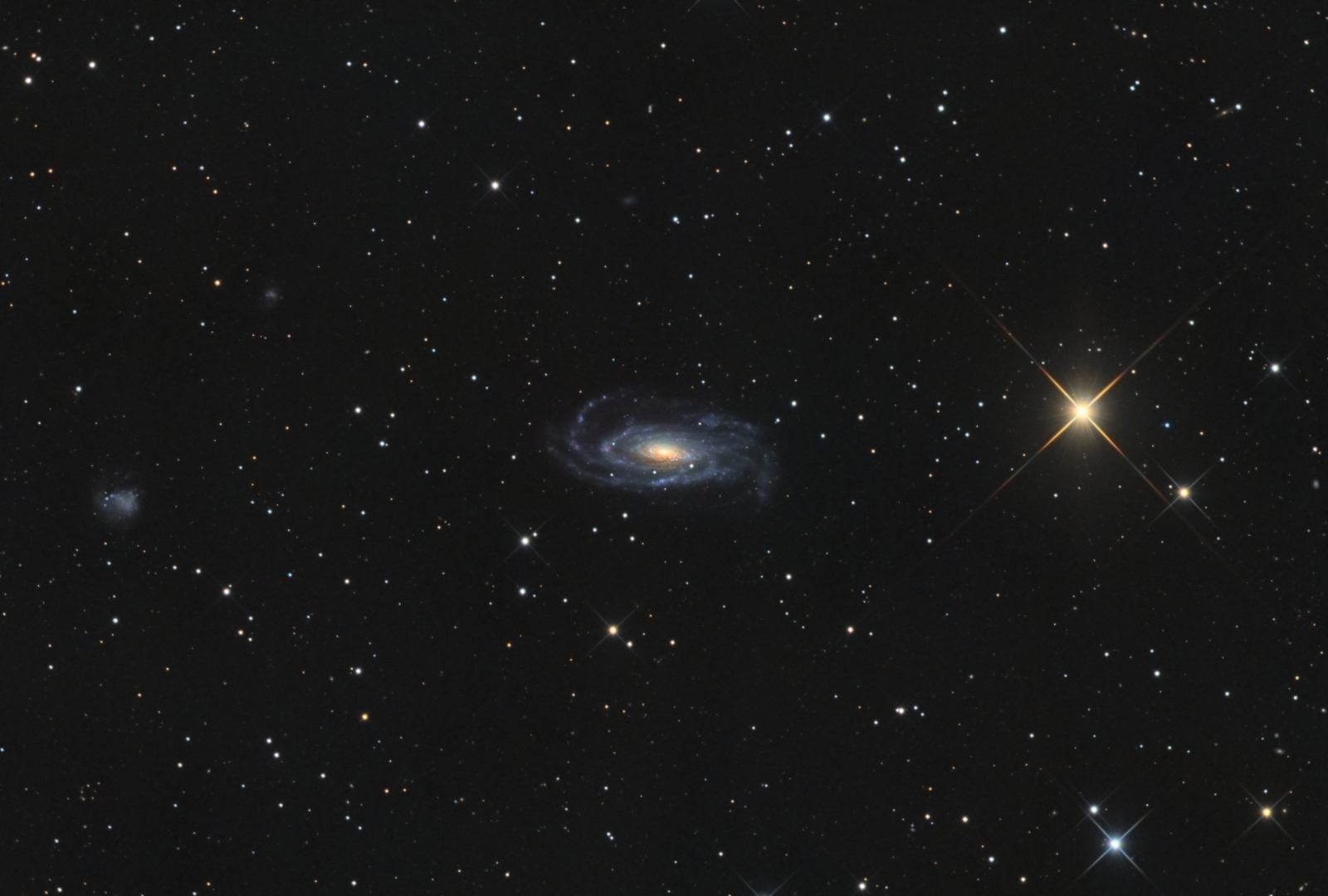
Click image for full size version
May 14, 2016
NGC5033 lies in the constellation Canes Venatici, the Hunting Dogs. It has a size similar to our own Milky Way galaxy, with an estimated mass 2 trillion times the mass of our sun. It belongs to a class of galaxies called “Seyfert galaxies” that have very bright cores likely powered by a supermassive black hole at its centre. Several other galaxies appear in this field. At left, galaxy PGC4538460 shines about 10,000 times fainter than the bright yellow star in this image, which at magnitude 6.5 is just a bit too faint for most people to see with the naked eye. One of the things that really puts the size of these galaxies in perspective for me is that every individual star that you see is in the foreground — even those that appear “in” the galaxy. The galaxies themselves are far, far in the distance — 40 to 60 million years for 5033 — and between us and them, mostly empty space.
Tekkies:
SBIG STL-11000M camera, Baader LRGB filters, 10″ f/6.8 ASA astrograph, Paramount MX. Guided with QHY5 on an 80 mm f/6 refractor. FocusMax for focusing and CCD Commander to automate the sessions. Acquistion and guiding with TheSkyX. All pre-processing and processing in PixInsight. Shot from my SkyShed in Guelph, Ontario. RGB under moderate moonlight and luminance with no moon. Average to very good transparency and good seeing.
8x15m R and B, 10x15m G , and 25x15m L unbinned frames (total=12hr45m).
RGB
Creation and cleanup: R, G and B masters were prepared with ImageIntegration. The R, G and B masters were combined with ChannelCombination, and the resulting RGB image was cropped and processed with DBE (to applications were needed), followed by ColorCalibration using the central galaxy as the white reference.
Linear Noise Reduction: MultiscaleLinearTransform was used to reduce noise in the background areas of the RGB image. Layer settings for threshold and strength: Layer 1: 3.0, 0.5 Layer 2: 2.0, 0.39 Layer 3: 1.0, 0.25 Layer 4: 0.5, 0.1. A mask was used to protect high signal areas (Amplification 120; Smoothness 1.0).
Stretching: HistogramTransformation was applied to make a pleasing yet bright RGB image.
Synthetic Luminance
Creation and cleanup: An L master was created with ImageIntegration. The SynthL was made by combining the L, R, G and B masters using ImageIntegration (average, additive with scaling, noise evaluation, iterative K-sigma/biweight midvariance, no pixel rejection) to create the SynthL channel. The image was cropped to match the RGB and DBE was applied.
Deconvolution: A copy of SynthL was stretched to use as a deconvolution mask. A star mask was made from unstretched SynthL to use as a local deringing support. Deconvolution was applied (80 iterations, regularized Richardson-Lucy, external PSF made using DynamicPSF tool with about 25 stars; local deringing at 70% and global dark deringing at 0.02).
Linear Noise Reduction: MultiscaleLinearTransform was applied to reduce the noise. Layer settings for threshold and strength: Layer 1: 3.0, 0.6 Layer 2: 2.0, 0.5 Layer 3: 1.0, 0.4 Layer 4: 0.5, 0.15
Stretching: HistogramTransformation was applied to make an image with similar brightness to the RGB image.
Combining SynthL with RGB:
The luminance channel of the RGB image was extracted, processed and then added back into the RGB image as follows:
1. RGBWorkingSpace was applied to the RGB image with all channels equal to 0.33
2. Extract luminance from the RGB image.
3. Apply LinearFit to the extracted luminance using SynthL as the reference.
4. Use ChannelCombination in Lab mode to replace the RGB’s luminance with the fitted luminance from step 3.
5. LRGBCombine was then used to make a SynthLRGB image.
Final Processing
TGVDenoise was applied and the image was re-stretched with HistogramTransformation. UnsharpMask was applied to the galaxy using a mask. Contrast, brightness and saturation were adjusted in several iterations with the Curves tool, with separate adjustments made for background, stars and galaxies using different masks. The bright star to the right of the image was protected during many operations by using CloneStamp to darken it in the masks.
Image scale is about 1.1 arcsec per pixel for this camera / telescope combination.


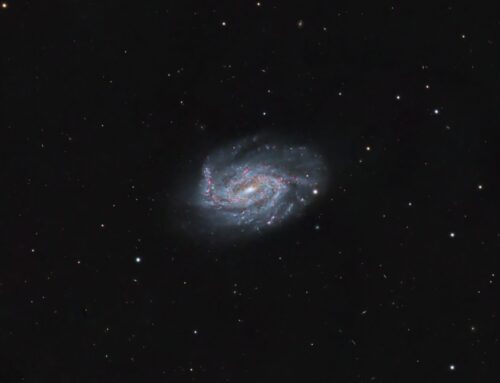
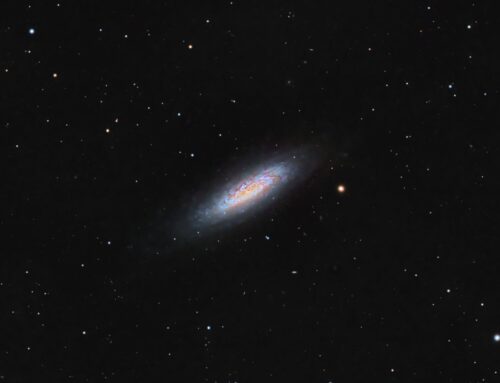
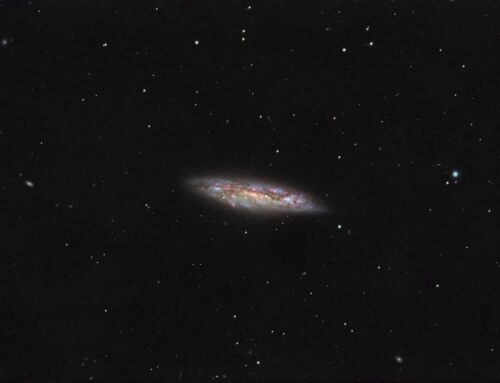
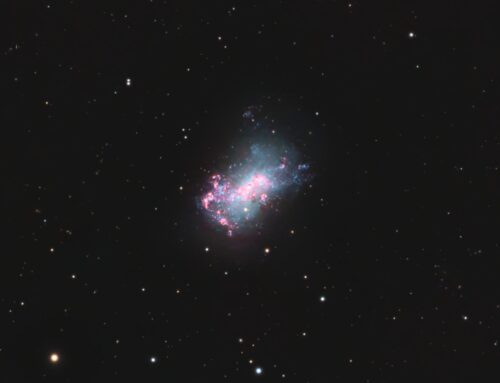
Nice image Ron. There’s a 3D feel to this.
I find galaxies tricky to process, particularly in strong star fields.
Regards,
Mark